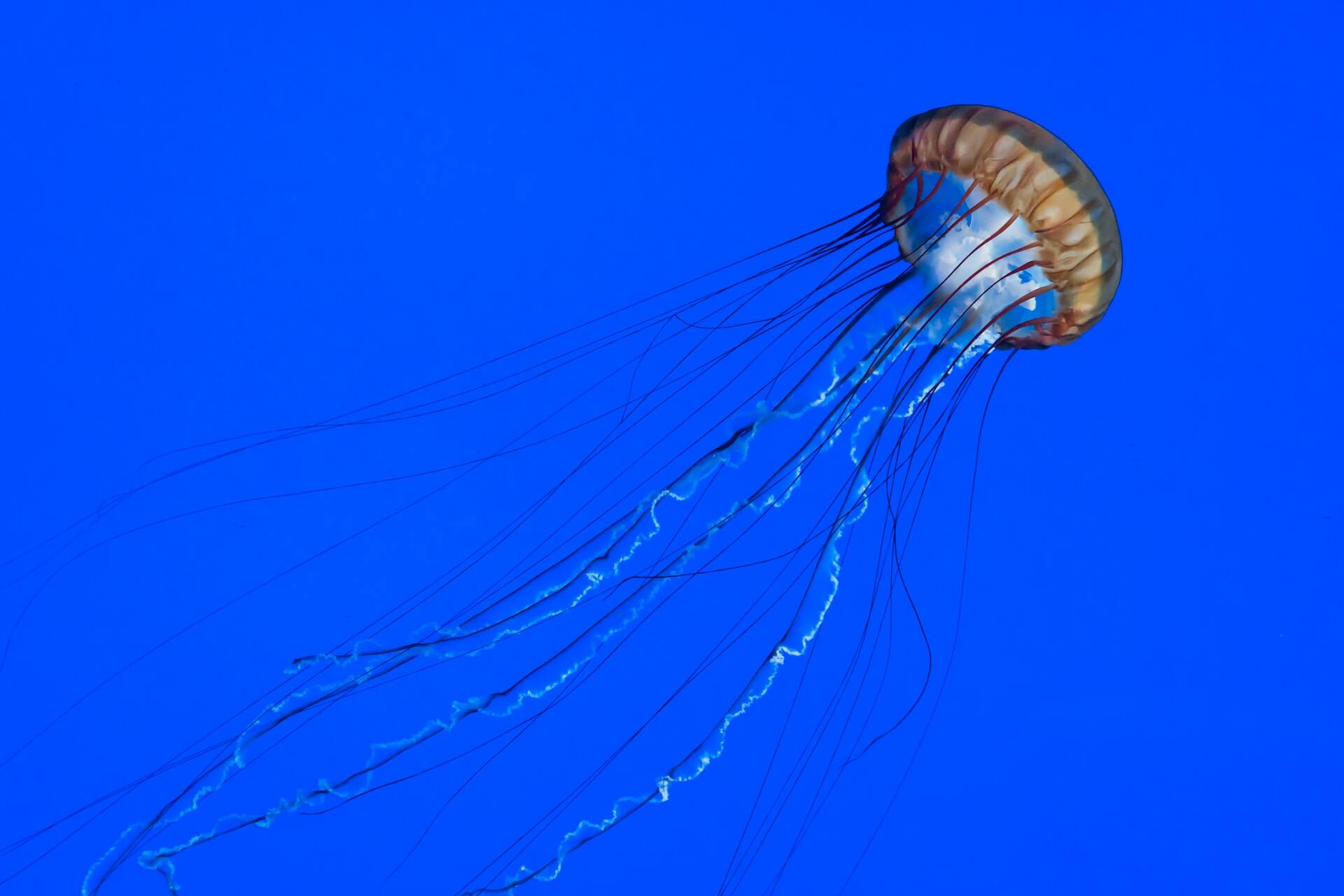Jellyfish stings can be potentially dangerous, so it’s natural to wonder if your wetsuit can protect you from ever experiencing one. When diving or swimming in areas where jellyfish are abundant, wearing a wetsuit or other protective clothing is a smart move.

Wetsuits are generally effective at preventing jellyfish stings as they provide a barrier between your skin and the jellyfish’s tentacles. However, it’s important to remember that exposed areas such as your hands, face, and legs are still vulnerable to stings. Some divers even wear dive hoods and gloves to ensure maximum protection.
In this article, we’ll discuss how a wetsuit can be an effective protective layer against jellyfish stings, other viable options, and what to do in case you get stung by a jellyfish.
Do Wetsuits Prevent Jellyfish Stings?
Wetsuits can provide a level of protection against jellyfish stings, but they’re not foolproof. The thick neoprene material used in wetsuits can prevent jellyfish from stinging your covered areas.
However, even when you’re wearing a wetsuit, certain parts of your body such as your head, face, hands, and feet might still be exposed. To protect these areas, consider getting extra gear like gloves, booties, and a hood.
Keep in mind that avoiding areas known to be frequented by jellyfish is the easiest way to reduce your chances of being stung.
Are There Wetsuits Designed for Jellyfish Sting Protection?
Though not a wetsuit, the Stinger Suit is a lightweight and durable dive skin designed specifically to protect against notorious jellyfishes such as the Box Jellyfish, Irukandji, Jimble, and Pelagia Noctiluca.
The Stinger Suit offers very little insulation or buoyancy, so it is very different in terms of functionality from a wetsuit.
However, one area where they do have common ground is in their protection against jellyfish stings. As long as a wetsuit provides enough skin coverage, i.e. a full wetsuit, any wetsuit can technically provide sufficient protection against jellyfish stings because the material is thick enough to keep stingers away from your skin
Can a Thin Skinsuit Protect Against Jellyfish Stings?
If wetsuits are thick enough to provide protection against jellyfish stings, then you might be wondering if a thin skinsuit could provide some protection against their stings as well. Good news!
The material of the skinsuit creates a barrier between your skin and the jellyfish’s stingers, making it difficult for them to penetrate the fabric and reach your skin. However, it’s important to note that a skinsuit may not provide complete protection, especially against species with longer and stronger stingers.
If in doubt, either wear a wetsuit or stay out of waters that are known to have an abundance of jellyfish.
Now that you have a few options to protect yourself against jellyfish stings, let’s explore some tips on how to handle a jellyfish sting if it does happen. In the next section, we will discuss first aid measures and treatment options to manage jellyfish stings effectively.
What to Do if Stung by a Jellyfish
If you get stung by a jellyfish while wearing a wetsuit, don’t panic. It’s important to stay calm and follow these steps to alleviate the pain and minimize any potential harm.
First, remove yourself from the water to avoid further contact with jellyfish. Carefully take off your wetsuit, ensuring you don’t touch the sting area with your bare hands. Instead, use an object like a credit card or a dull knife to gently scrape off any tentacles still attached to your skin.
Next, rinse the affected area with salt water or hot water. This will help decrease the burning sensation from the sting. It’s recommended to avoid using freshwater, ammonia, or even urine as they might worsen the pain and cause more nematocysts to activate. You can also take a hot shower to alleviate the discomfort.
If the pain persists, consider taking oral pain medication or using over-the-counter pain relievers. You can also apply a cold pack to the affected area to help reduce the swelling and numb the pain.
Continue to monitor your symptoms. If you experience difficulty breathing, chest pain, or severe allergic reactions, seek medical attention immediately. In rare cases, you might need emergency care or antivenom medication, especially if the sting comes from a box jellyfish.
Sources:

